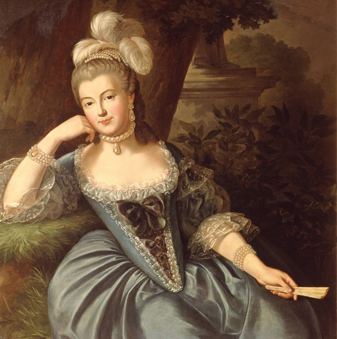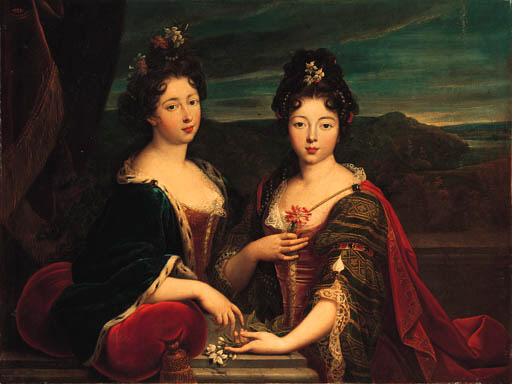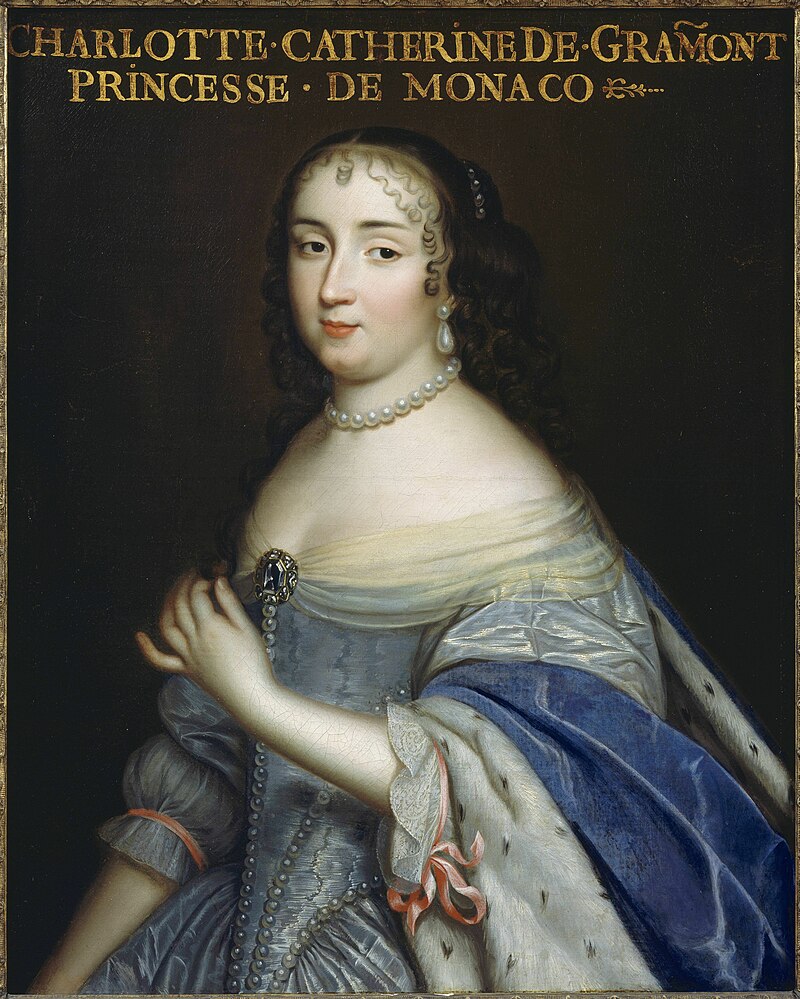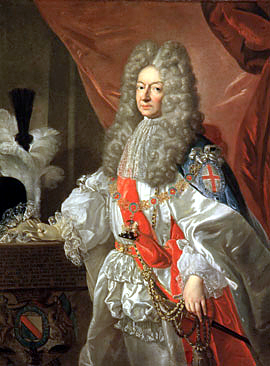by Susan Flantzer
© Unofficial Royalty 2022

Louise d’Aumont, Hereditary Princess of Monaco; Credit – Wikipedia
Louise d’Aumont was the wife of Honoré IV, Prince of Monaco. However, Louise divorced Honoré before he became Prince of Monaco, and so the title she held during their marriage was Hereditary Princess of Monaco. Louise Félicité Victoire d’Aumont, Duchess of Mazarin, Duchess of Mayenne, Duchess of Meilleraye was born on October 22, 1759, at the Hôtel d’Aumont in Paris, France. She was the only child of Louis Marie Guy d’Aumont, Duke of Aumont (link in French) (1732 – 1799), and Louise Jeanne de Durfort, Duchess of Mazarin, Duchess of Mayenne, Duchess of Meilleraye (link in French) (1735 – 1781). Her paternal grandparents were Louis Marie Augustin d’Aumont de Rochebaron, Duke of Aumont (1709 – 1782) and Victoire Felicite de Durfort. Her maternal grandparents were Emmanuel Félicité de Durfort, Duke of Duras (1715 – 1789) and his first wife Charlotte Antoinette de La Porte (1719 – 1735).

Louise’s mother Louise Jeanne de Durfort, Duchess of Mazarin, Duchess of Mayenne, Duchess of Meilleraye; Credit – Wikipedia
Through her mother, Louise was the great-great-great-granddaughter of Hortense Mancini, Duchess of Mazarin, Duchess of Mayenne, Duchess of Meilleraye, the mistress of King Charles II of England, and one of the two heirs of her uncle Cardinal Jules Mazarin, the First Minister of King Louis XIV of France. Louise was the heir of Hortense Mancini’s titles and the Mazarin family wealth.
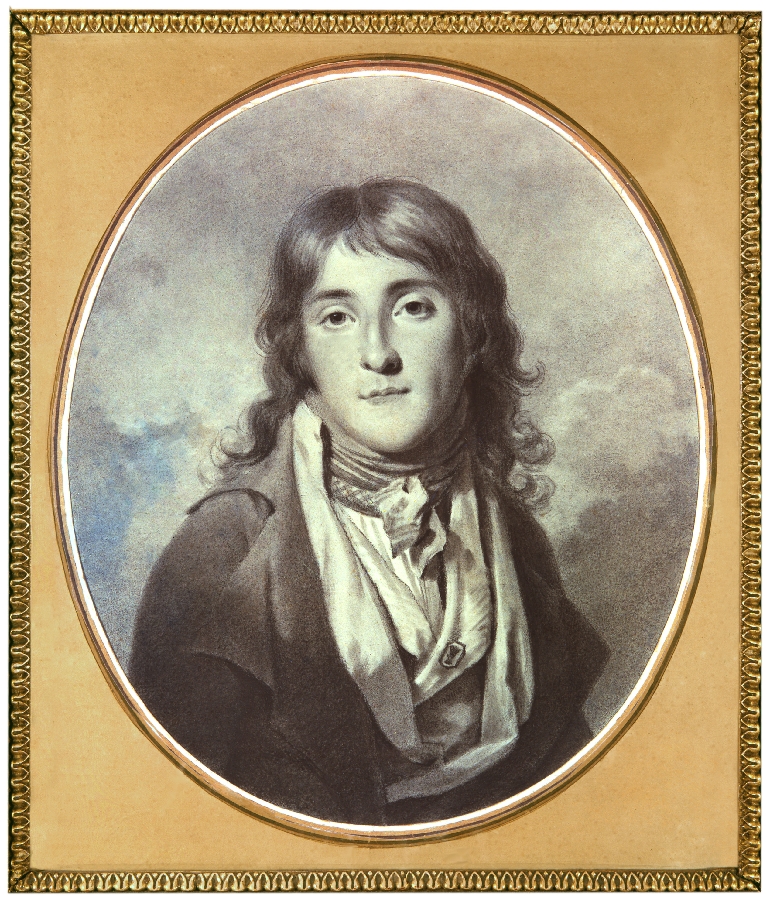
Honoré IV, Prince of Monaco; Credit – Wikipedia
Noting the family wealth and the large dowry that would come with marriage, Honoré III, Prince of Monaco arranged a marriage for his son and heir Honoré (IV) to Louise. The couple married on July 15, 1777.
Louise and Honoré (IV) had two sons, both Sovereign Princes of Monaco:
- Honoré V, Prince of Monaco (1778 – 1841), unmarried
- Florestan, Prince of Monaco (1785 – 1856), married Maria Caroline Gibert de Lametz, had one son and one daughter
The French Revolution had dire consequences for the princely family of Monaco. In January 1793, Honoré III, Prince of Monaco was officially declared deposed and the Principality of Monaco was annexed by France. The members of the former ruling Grimaldi dynasty lost all aristocratic privileges in France, were dispossessed of their French property, and became French citizens. During the Reign of Terror, in September 1793, Honoré (IV), Louise, their son Florestan, and Honoré (IV)’s father Honoré III were arrested and imprisoned in Paris as enemies of the people. Louise and her son Florestan were rescued by a family doctor who forged release papers and hid them in his home until the Reign of Terror was over. The wife of Honoré IV’s brother Joseph was not as lucky. Joseph spent most of his time abroad negotiating foreign loans, making him a suspect of counter-revolutionary activities. When Joseph did become involved in a counter-revolution, his wife Marie Thérèse de Choiseul was arrested in the absence of her husband, condemned to death, and guillotined in 1794, one of the last victims before the end of the Reign of Terror.
In October 1794, Honoré III and Honoré (IV) were released from prison. Honoré III never recovered from his imprisonment and died in Paris on March 21, 1795, at the age of 74, but his burial place is unknown. Honoré IV, whose chronic ill health had been worsened by imprisonment, would have become Prince of Monaco but Monaco was no longer a sovereign monarchy. However, Honoré IV’s family properties in France were returned to him but they were in poor condition and all of the contents were gone.

Louise on a Monaco postage stamp; Credit – The Peerage
In 1794, while Honoré IV was still in prison, Louise gave birth to an illegitimate daughter Amélie Céleste Erodore d’Aumont. The father of the child is believed to have been Antoine de Montazet, Archbishop of Lyon. After Honoré IV’s release from prison, Louise and Honoré IV’s marriage became unhappy and the couple separated. In 1798, Louise divorced Honoré IV, giving Louise sole access to her fortune. Louise married René François Tirnand-d’Arcis on February 6, 1801, and divorced him in 1803.
After Napoleon’s defeat in 1814 and the Bourbon Restoration which saw Louis XVIII, a younger brother of the beheaded King Louis XVI, become King of France, Honoré IV’s brother Joseph petitioned King Louis XVIII to restore the Principality of Monaco to the Grimaldi family. Louise’s former husband Honoré IV finally became Sovereign Prince of Monaco in 1814. However, his physical condition had worsened and he was now paralyzed on one side of his body. Because of Honoré IV’s condition, a regency was established to rule in his name. Honoré IV’s brother Joseph was regent from 1814 -1815, and then Louise and Honoré IV’s elder son Honoré served as regent until his father died in 1819 when he succeeded him as Honoré V, Prince of Monaco. In a somewhat hypocritical move, Louise removed her elder son Honoré V, Prince of Monaco from her will because he had an illegitimate child, and left her entire fortune to her younger son Florestan who became Sovereign Prince of Monaco upon his unmarried elder brother’s death in 1841.

Louise’s first burial site at Père-Lachaise Cemetery in Paris; Credit – CC BY-SA 3.0, https://commons.wikimedia.org/w/index.php?curid=22545708
Louise died in Paris, France on December 13, 1826, aged 67. She was initially interred in a mausoleum at Père-Lachaise Cemetery in Paris but in 1885, her grandson Charles III, Prince of Monaco ordered her remains transferred to the new Cathedral of Monaco.

Louise’s grave at the Cathedral of Monaco; Credit – https://www.findagrave.com/memorial/7832648/louise-d_aumont_mazarin#view-photo=2562563
This article is the intellectual property of Unofficial Royalty and is NOT TO BE COPIED, EDITED, OR POSTED IN ANY FORM ON ANOTHER WEBSITE under any circumstances. It is permissible to use a link that directs to Unofficial Royalty.
Works Cited
- Edwards, Anne, 2017. The Grimaldis of Monaco. Blue Ridge Summit: Lyons Press.
- En.wikipedia.org. 2022. Louise d’Aumont – Wikipedia. [online] Available at: <https://en.wikipedia.org/wiki/Louise_d%27Aumont> [Accessed 22 March 2022].
- Flantzer, Susan, 2022. Honoré IV, Prince of Monaco. [online] Unofficial Royalty. Available at: <https://www.unofficialroyalty.com/honore-iv-prince-of-monaco/> [Accessed 23 March 2022].
- Fr.wikipedia.org. 2022. Louise d’Aumont — Wikipédia. [online] Available at: <https://fr.wikipedia.org/wiki/Louise_d%27Aumont> [Accessed 22 March 2022].
- geni_family_tree. 2022. Louise d’Aumont, duchesse d’Aumont. [online] Available at: <https://www.geni.com/people/Louise-d-Aumont-duchesse-d-Aumont/5294681026870107703> [Accessed 23 March 2022].









